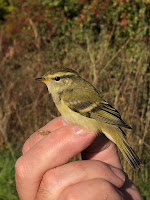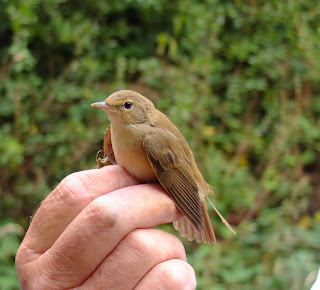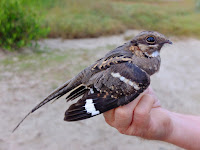The Calf
Of Man 2018
Back
in April, Dave, Peter N and myself went on a trip to the Calf of Man for a
week. The Calf is a small island to the south of the Isle of Man. It is a
Nature Reserve and Bird Observatory run by the Manx National Heritage.Having
got the ferry from Heysham, we arrived in Douglas and stayed overnight. On the
morning of the 1st of May we set off to Port St. Mary hoping to catch our
connecting boat to the Calf but unfortunately due to high winds and swell we
were unable to go that day and were told we would have to attempt the crossing
the following day. Dejected but still hoping to get a window to cross that same
day, we set off to the Sound near Cregneash to do a spot of birding to pass the
time.
As the day wore on it
became apparent we were not going to cross that day and we ended up doing a
roadtrip of the IOM stopping off at the Point Of Ayre for a bit more birding
and also at Laxey where we had a look at the Laxey wheel which is reported to
be the largest waterwheel in the world.
We managed to find a great
little B&B at short notice called the Bed and Blueberry which was just off
the front in Douglas where we stayed overnight. The following morning we were
up around 07.30 and after a relaxed start to the day, we made our way once
again to Port St Mary optimistic that the weather seemed fairly calm and bright.
Unfortunately our mood was not to last when we received a call to say that the
weather at sea was not looking favourable, however there may be a chance to get
a window around lunch time.
It
wasn't long before we received a call to say the crossing was a go and that we
needed to be on the harbour quayside for 12.00pm.
We
encountered a fairly high swell going over but I'm happy to report no sea
sickness. We finally arrived around 14.00 pm and soon got straight into some
ringing as we had already lost a day due to the weather.
We
caught good numbers of Goldfinches throughout the week although the weather was
not always in our favour. A couple of the days did start very foggy with drizzly
rain so we had to try other means of catching as there was no chance of getting
nets open.
Dave
and myself took some spring traps down near to the landing slip to try our luck
at Wheatear of which there were many. Although we only managed one each, we
were both pleased as they were a new species for us with lots of wildlife to
watch whilst there: Grey seals and large numbers of Eider duck being the most
common.
We
continued with our ringing activities throughout the week dodging the
continuing morning sea mists and fog by doing whatever we could to get in some
ringing. Dave had his first Great black-backed Gull whilst Peter managed to get
a Whinchat and also a Wheatear from one of the mist nets.
Aron the warden on the Calf, decided
conditions would be favourable to try our luck at catching some Manxies after
the evening de-brief.
Evening
de-brief is where all volunteers and helpers come together and report the days'
activities, including number counts of animals and birds seen on the island and
for the various sea watches that take place each day. By doing this the warden
can monitor the passage of birds throughout the year. When this was finished,
we had a hot cuppa and set off for the south of the island. After a couple of
hours we had managed to catch around 30 birds and headed back to get some sleep
.
The following day Aron treated us
to a bit of rock climbing to ring juvenile Shag. We seemed to climb most of the
rocks on the south side of the island but it was well worth it as the three of
us all managed to ring one! A job well done.
As our week drew to a close it was
touch and go whether we would actually be able to get off the Calf due to poor weather
forecasts. This meant we also had to cut our trip short at the other end and
get off a day early. We were very disappointed but were treated to a great boat
trip around the island which the warden had arranged to do a seabird count of
colonies on the Island. So we boarded a local boat owners rib which we then
toured the island on before being taken back to Port St Mary and then the Ferry
back to Liverpool.
On behalf of Dave, Peter and myself we would to thank Aron and his team of
volunteers who made our stay on the Calf both rewarding and interesting and
hopefully one day we will return .











